St Mary-le-Ghyll's Three Decker Pulpit
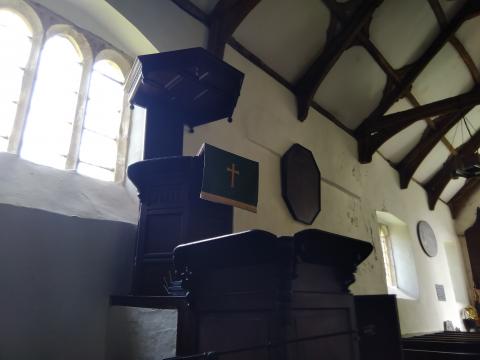
I finally made entry to St Mary-le-Ghyll, the old parish church of Barnoldswick. Although I have often visited the exterior, and written about it, the door has always been shut. Before the lockdown, I had emailed the minister, but she cannot have received my emails for no reply was forthcoming. Last week, someone shared a ‘fundraiser and open day‘ that the congregation had put on, so I took advantage and went for a snoop.
As this church is some way out of town, and an alternative parish church was constructed closer to where people lived, enterprising Victorians never bothered to ‘update’ or ‘restore’ Ghyll Church. Visiting is to therefore step back in time. It has a full set of oak, Jacobean box pews (circa 1620) as well as the most wonderful three-decker pulpit. Historic England, usually rather conservative when dating buildings and fittings, states this is also early seventeenth-century, although the parish’s own website dates it to a mere 1723. I suspect the older date is accurate, and that later date was for some repairs.
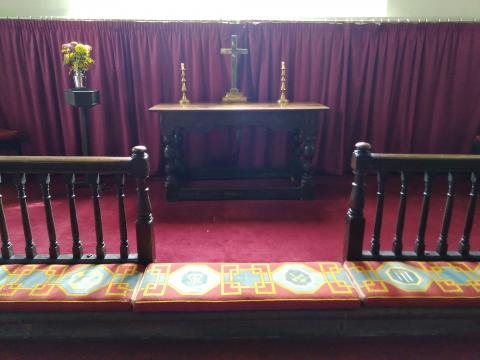
We are used to Anglican churches being dominated by a gaudy altar at the east end, and a relatively modest pulpit standing off-centre, so as not to detract from the eucharist. Here, the altar is a rather unimposing (though ancient) table, whereas the huge pulpit dominates the room from the middle of the north wall. As though to emphasis the pulpit’s seniority, many of the box pews face away from the altar, giving their occupants a better view of the preacher. This is because prior to the 1830s, the Church of England was genuinely protestant. Weekly communion was unknown, being instead celebrated up to four time a year only. The highlights of worship were public prayer and preaching, all of which centred on the pulpit. As Victorian Anglicans became engrossed by ritual and ceremony, the huge pulpits were dismantled and the altars became more prominent and colourful.
The top level of the pulpit was for preaching. There, the parson would stand as he preached from his text. The second level, just below, was for reading the lessons, usually performed by the parson, but sometimes by another. The third, lowest level was reserved for the parish clerk or warden who would have led the congregation in its responses to the parson’s common prayer. When metrical psalms were sung, such as we still enjoy at Salem, the precentor may have stood on that lower level also.
Historically, I find this all very interesting. Theologically, it reminds us of the high value which former Christians placed upon preaching, which a later generation sought to discount and displace. As I was taking my photographs, I was joined by a cheery woman claiming to be the Church Warden. She was keen that I joined the congregation on a Sunday, assuring me I would be most welcome. I was genuinely grateful for the invitation, though I explained I belonged to a church elsewhere. She said that they were hoping to provide information sheets for visitors, and to have more open days. I suggested that they might add information about the Christian faith itself; too many churches, I supposed, spoke of their history but little else, as though they were just museums. She indicated agreement, saying that it was “all about God and Jesus”. I smiled. It was no credal, theologically complex declaration of the church’s mission, but it was good enough for me, and better than you might get from other church wardens. It prompted me to make a bigger donation for my cup of tea and cake as I left the site.
The warden had invited me into the pulpit. The narrow steps and sharp fall (see second photo down) waiting to reward a careless footing, persuaded me why the current incumbent prefers to use the second level only.
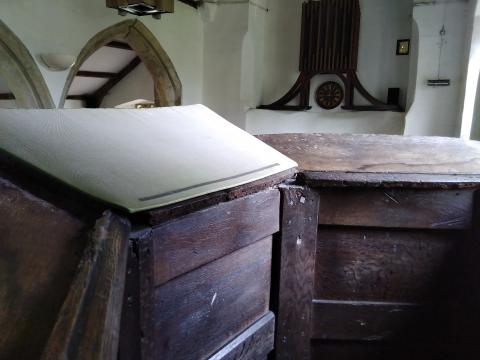
The top level of the pulpit
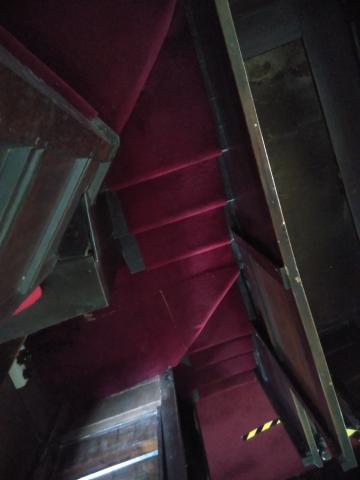
Looking directly down from the pulpit
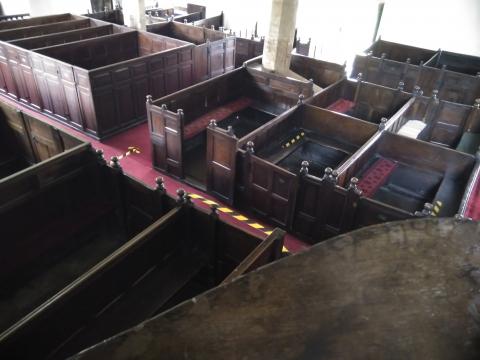
A view from the pulpit
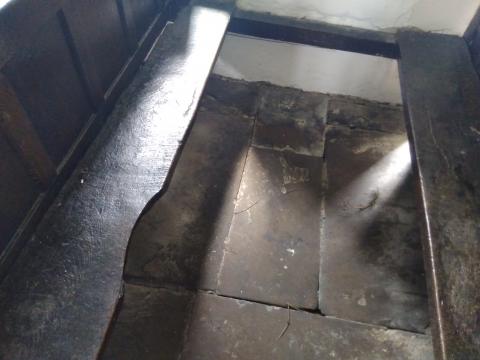
A family box pew
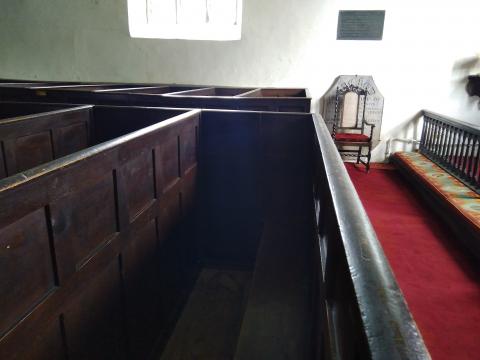
A pew, with its back to the altar
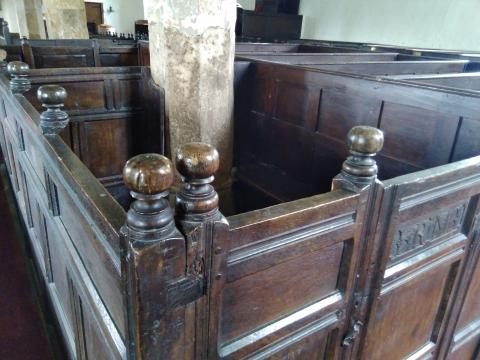
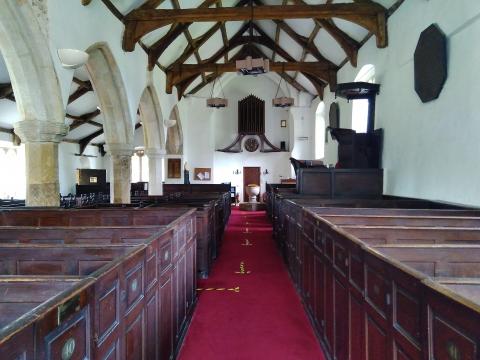
- Log in to post comments


 Sunday Worship 10.45am & 6.00pm
Sunday Worship 10.45am & 6.00pm